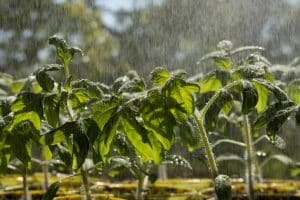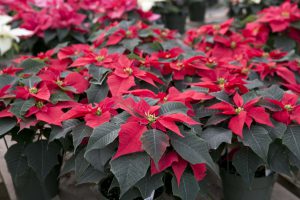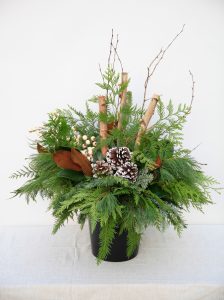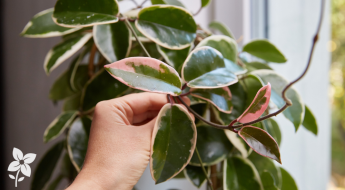Succulents
by Rob Sproule
It wasn’t long ago that the only succulents you’d find on Canadian window-sills were Aloe Vera, Jade plants, and a bristly prickly cactus or two (yep, cactus are succulents, too). It’s been a meteoric rags-to-riches story since, with succulents now being the trendiest and most versatile houseplant around.
I’ve seen succulents used in floral arrangements, pictures frames, fairy gardens, wreaths, and as wedding favours. They’re easy to use, hard to kill, and their stylish, architectural leaves with their cool tones pack more aesthetic punch than most flowers do.
Basic Care: Watering and Fertilizer
A vast group of plants with a bewildering range of diversity, succulents all share one simple, ingenious adaptation. Certain parts of them (usually the leaves) store water in order to survive in arid climates. If you’ve ever cracked open a thick, fleshy succulent leaf and seen the moisture inside, you know what I mean.
With such a brilliant built-in mechanism to ration water, most succulent are killed from over-watering. Wait until the soil is quite dry before watering, and water well when you do. Never leave your succulent sitting in a full saucer.
To water effectively, follow the same seasonal cycle as succulents. In their actively growing summers, water generously every 3-5 days, depending on light and heat levels (more if outside). Over their dormant winters, cut way back to every 3-4 weeks.
Puffy leaves is the most common sign of overwatering; the plant is attempting to store the water but is beyond its capacity. After that, the lower stem may turn brown as root rot sets in. Once the roots rot, the leaves with shrivel and appear to need water desperately; they do need water but there are no healthy roots to deliver it.
Shriveled leaves also indicate under-watering, which is far rarer than over-watering. The soil will also probably be so bone-dry that it’s condensed into a ball like a dry sponge.
In the winter, while your palms and ferns are getting sickly in the dry air, your succulents will thrive. Hailing from arid regions, they’re used to low humidity. If you have a humid home, try to put them on a spot with lots of air circulation and cut back on the watering.
Succulents don’t need as much fertilizer as other plants. In the summer they appreciate a dose of all-purpose or succulent fertilizer once or twice a month. As the days grow shorter (early October), stop feeding until late March.
Avoid high nitrogen blends (high first number) which will burn their delicate roots. If you’re using a fertilizer not specifically meant for succulents, cut the recommended concentration in half.
Light & Temperature
Succulents are sun-bathers and thrive near south or west windows. Be wary of putting them within 6 inches of a full sun window, however, as the glass magnifies the light and it could burn the leaves.
If your succulents starts to stretch (the stems between leaf nodes get longer than usual), you’ll need to provide more light. Most varieties thrive outdoors in the summer, although shouldn’t be introduced cod-turkey to our desiccating sun after a long winter and spring of diffused light. Protect them from the afternoon scorch to avoid white or brown burn marks on the leaves.
Succulents can take colder nights than most people think (desserts have chilly nights). They love 10 degree C night and 27 degree C days, so keep them outdoors in the summer if possible.
Succulents don’t often bloom in the home because they need a greater temperature swing between day and night than central heating provides. Many species use an increased day and night temperature differential (sign of impending winter) to set bud, so keeping them outside in late summer will improve your chances of winter flowers.
















